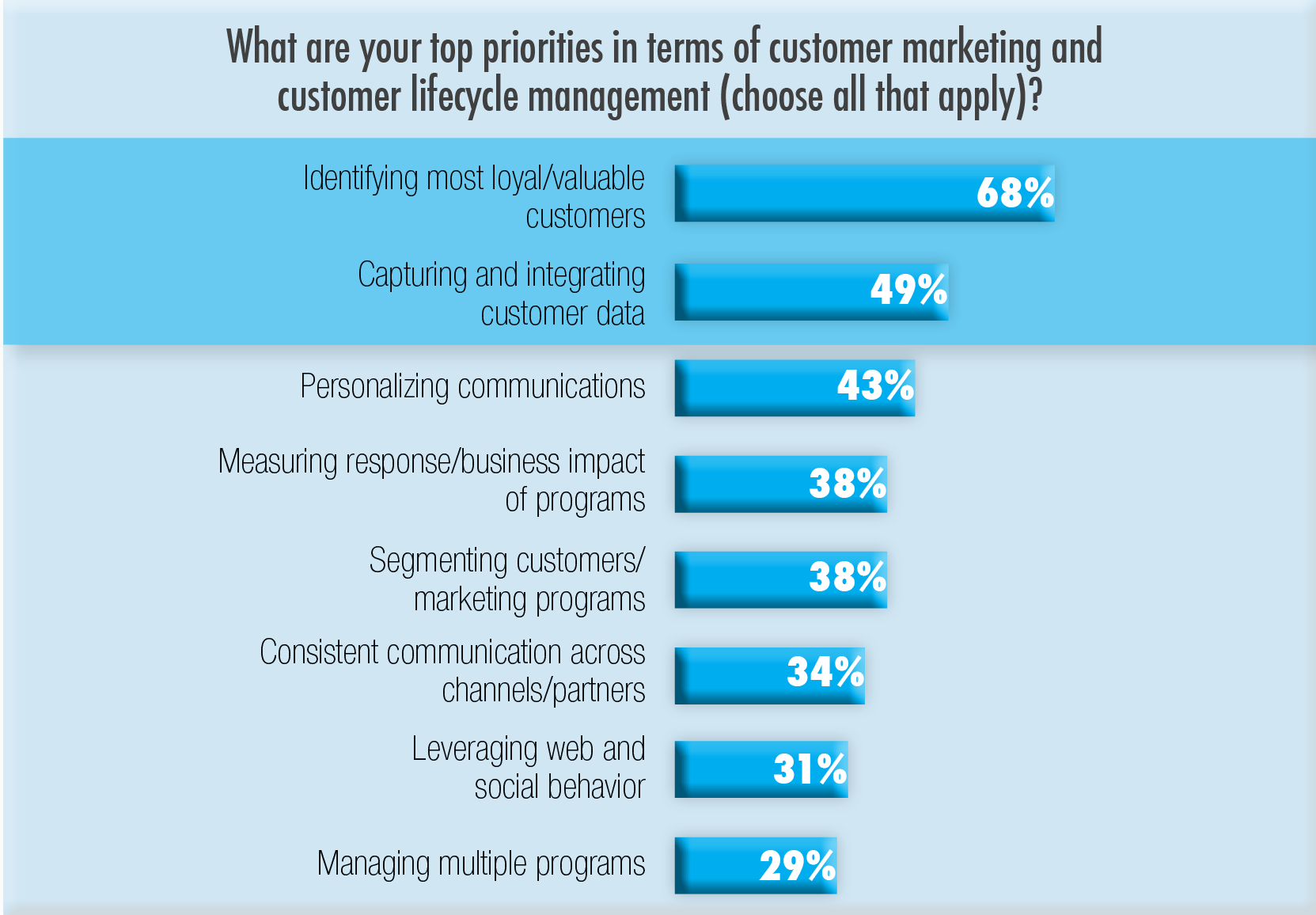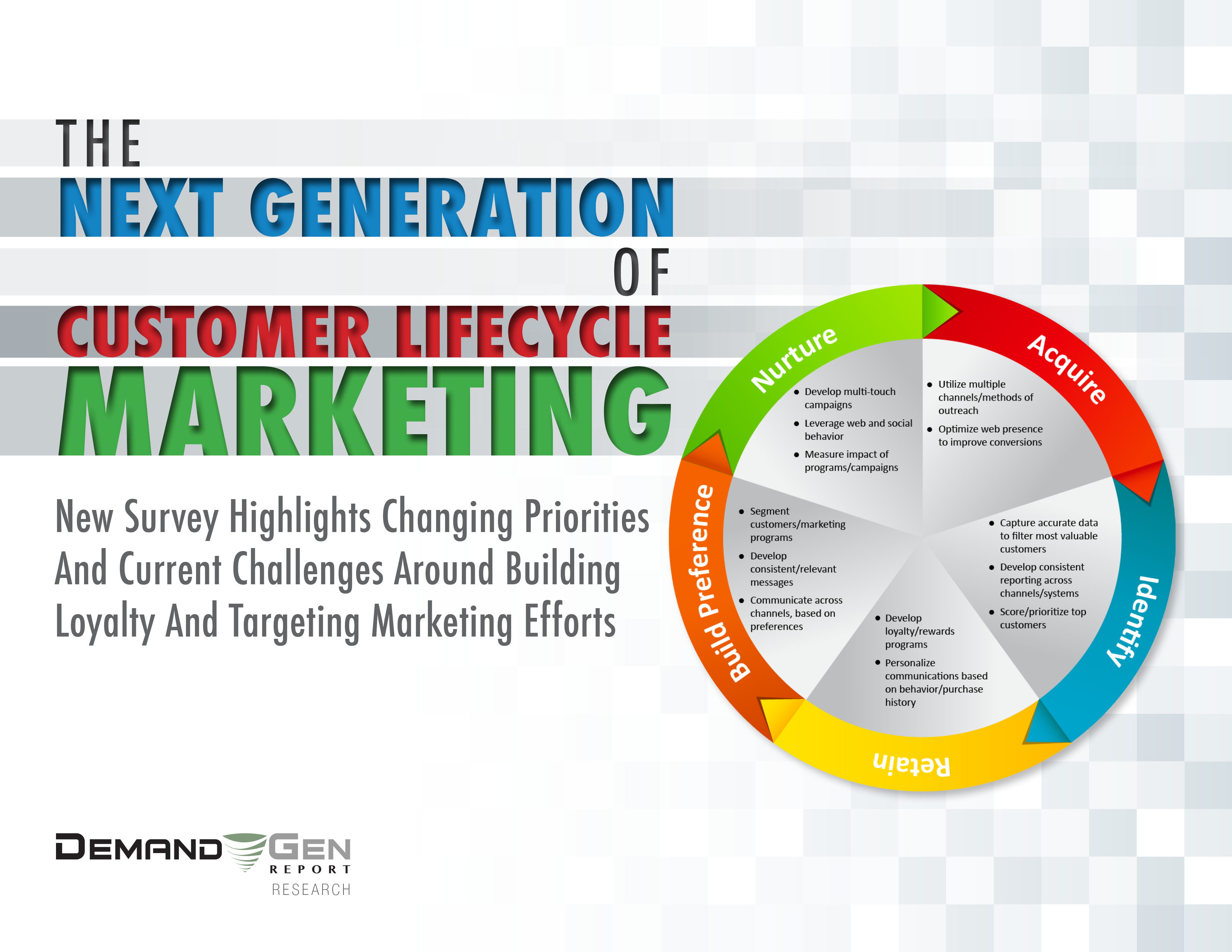B2B marketers know that it’s important to stay focused on generating new leads and revenue. But more marketers today are also discovering new opportunities in marketing to existing customers.
A recent study, The Next Generation Of Customer Lifecycle Marketing, revealed just how important this trend has become. According to the study, two thirds of the marketers polled said that tracking the lifecycle of their current customers is now an important activity for their organizations.
B2B Marketers Address The Customer Lifecycle
“There is a growing interest and imperative around customer lifecycle marketing,” said Andrew Gaffney, Editor of Demand Gen Report, during a recent webinar discussing the study’s findings. “In the past, we saw more focus on customer acquisition, but people are now spending more time on understanding their current customers.”
When marketers discuss their lifecycle marketing priorities, one item in particular stands out: According to the study, 68% said that identifying their most loyal and valuable customers is a top priority. Another 49% said that they are very focused on capturing and integrating customer data, while 43% said that personalizing customer communications is a top action item.
According to Gaffney, the study also indicated that tracking and leveraging customer loyalty data—long a high priority for B2C marketers —is also increasingly important in the B2B sector. “Loyalty is still a somewhat bigger imperative for B2C marketers, but B2B isn’t very far behind,” he stated.
Other customer lifecycle marketing priorities, according to the survey, included measuring the business impact of customer marketing programs, segmentation, consistent multi-channel communication strategies, leveraging social media and managing multiple programs. (see chart)

According to the study, marketers also said that social media and mobile marketing will play increasingly prominent roles in their lifecycle marketing programs during 2013. As these channels join email, events, web sites and other elements in the lifecycle marketing mix, marketers will have to think more carefully about how to manage and measure their multi-channel communication initiatives.
The study also asked marketers to name the biggest obstacles to achieving their customer marketing goals. The two most common responses — managing multiple, disparate systems and struggling with insufficient data to support segmentation or targeting initiatives — reflect different aspects of the same problem, according to Gaffney.
“Multiple email, analytics, event management and other systems are still a problem,” Gaffney said. “Combine these with disparate reports and data sources, and it’s hard to get a consistent, 360-degree view” of an organization’s customer lifecycle marketing activities.
Other frequently cited obstacles included problems with manual reporting, a lack of integration between communication channels and an inability to determine a customer’s preferred communication channel.
One-Off Marketing Efforts Fall Short
During the webinar, both Gaffney and Krista Seidemann, Email Marketing Specialist at online business services provider SurePayroll, cited another obstacle – the prevalence of one-off communications – as a particularly challenging one for lifecycle marketers.
“We had no real marketing automation in place; we were often doing ‘marketing for marketing’s sake,’ and that involved a lot of one-off email,” said Seidemann. “We had no way of tracking how our programs were doing,” she stated, and no process in place for doing true one-to-one marketing with customers.
“One-offs are one of the most common marketing pitfalls,” agreed Gaffney. “Marketers are pushed by sales to get something out, or they simply get into a time crunch.”
Automation Jump-Starts Lifecycle Marketing Efforts
During the webinar, Seidemann describes SurePayroll’s efforts to deal with its customer lifecycle marketing challenges by adopting marketing automation technology. The firm’s key goals, she stated, were to create an improved new-customer onboarding process, increase ancillary product sales and boost the company’s flow of profitable, referral-based leads.
To accomplish these goals, Seidemann stated, SurePayroll used marketing automation to create and manage three customer lifecycle marketing initiatives:
Sending new customers a step-by-step how-to email, detailing how to create their first payroll, in order to reduce the number of phone calls requesting product tours from the SurePayroll customer service team;
A nurture campaign, kicking off 10 days after the customer’s first payroll, designed to introduce the customers to additional products and services, and to track their responses using a structured lead-management process;
A system for identifying highly satisfied customers based on their customer service interactions, and to encourage those customers to participate in a referral program.
According to Seidemann, the company’s initiatives reduced by 45% the number of calls from new customers seeking how-to guidance, allowing CSRs to focus on other activities. The nurture campaign spurred a 21% increase in ancillary sales, while the streamlined referral campaign resulted in a 52% increase in referral leads.
Linking Lifecycle Marketing Back To ROI
In addition to enabling the company’s customer lifecycle marketing plans, Seidemann said, marketing automation also make it possible for a small marketing team of 10 people to track their campaigns down to the last detail.
“We track everything now and tie it back to ROI,” she explained. “We’re able to tie together those metrics and see what’s working, even on a day-to-day basis.”
According to Gaffney, examples like this illustrate the role that marketing automation plays in enabling customer lifecycle marketing while eliminating many of the obstacles cited in the survey.
“Marketing automation enables teams to build a real dialogue with customers and respond to them intelligently,” he stated. “You understand their history and experience, build on what you learn from their behavior and use cross-channel communications to move them seamlessly along a profitable path.”







